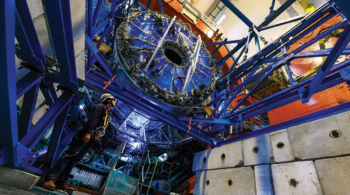 Read article 'Thinking big: the next generation of detectors'
Read article 'Thinking big: the next generation of detectors'
Thinking big: the next generation of detectors
The conference on the Next Generation of Nucleon Decay and Neutrino Detectors looked at the development of new, large-scale detectors. Alain de Bellefon reports.










